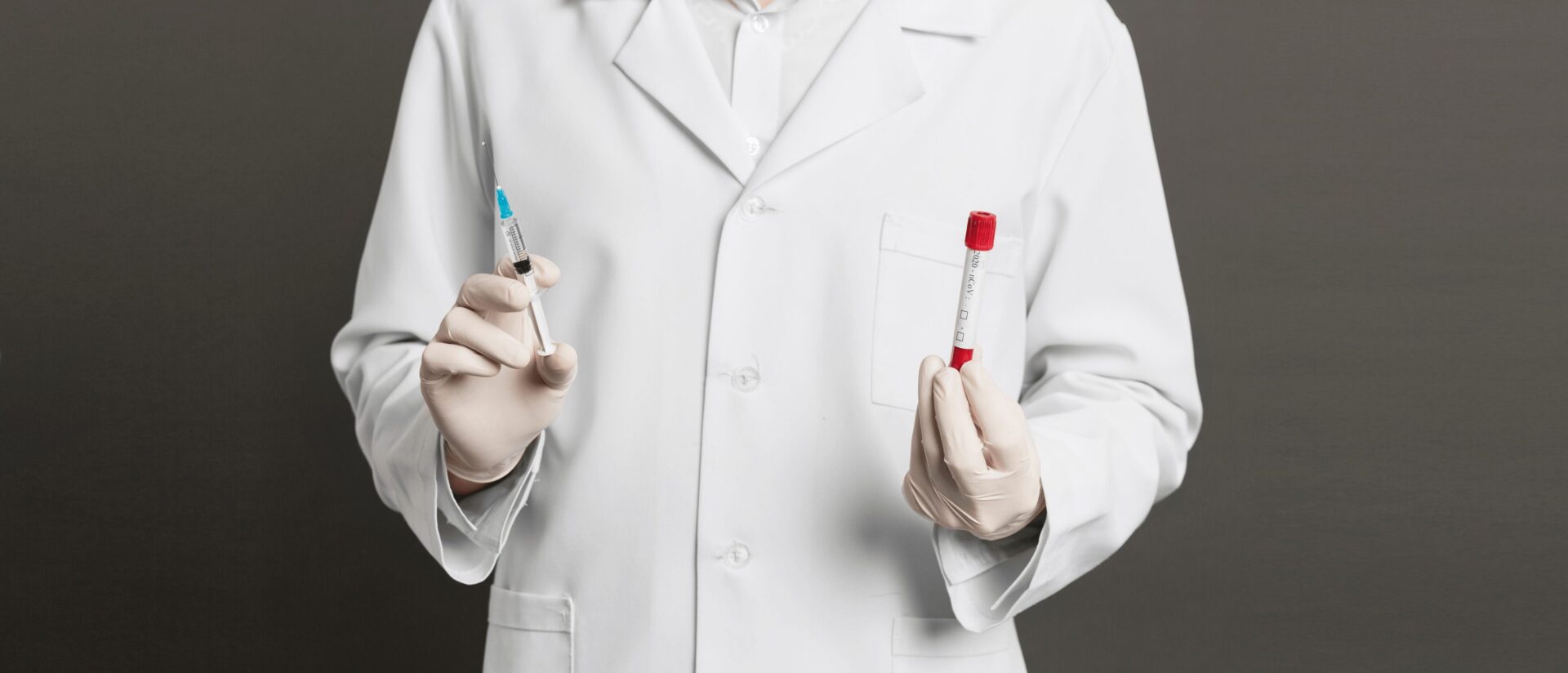
17 Jun How to Treat Leukaemia: A Roadmap to Regaining Health
How to Treat Leukaemia: A Roadmap to Regaining Health
By Island Hospital | June 17, 2024 12:00:00 PM
Medical Reviewer: Dr. Saw Min Hong , Haemato-Oncologist
Leukaemia is a complex blood cancer that poses significant challenges in its treatment.
So, how to treat leukaemia effectively?
In this article, we will discuss several treatment options for this disease. Remarkably, these options are all long-term processes that typically last 2 to 3 years or even a lifetime, depending on how the blood cancer progresses.
Hence, donated blood is essential in the recovery journey of leukaemia patients, as it enables them to continue receiving treatment by preventing complications arising from dangerously low blood counts.
As we celebrate World Blood Donor Day on June 14th, we recognise the invaluable contribution of blood donations in supporting those battling leukaemia.
With the right approach to treatment and the support of blood donations, it is possible to combat and manage leukaemia effectively. Join us as we unravel the complexities of leukaemia, equipping you with the knowledge needed to combat and cope with this disease.
What is Leukaemia?
Leukaemia is a type of blood cancer resulting from genetic changes in white blood cells. It is characterised by the rapid and uncontrolled growth of abnormal white blood cells in your bone marrow.
As leukaemia progresses, it can interfere with your bone marrow’s ability to produce other normal blood cells, such as platelets and red blood cells, in addition to defective white blood cells.
Unlike other cancers that form solid tumours, leukaemia does not typically appear as a mass on imaging tests like CT scans, MRI scans, or X-rays. Instead, the cancerous cells circulate throughout your blood and bone marrow.
Remarkably, leukaemia is the 13th most common cancer worldwide.
How Many Types of Leukaemia Are There?
Leukaemia are classified based on two factors: the speed at which the disease progresses and the type of white blood cell affected.
A. By Speed of Progression
Types of Leukaemia | Explanations |
|---|---|
Acute leukaemia | |
Chronic leukaemia | |
B. By Cell Type
Types of Leukaemia | Explanations |
|---|---|
Lymphocytic/ Lymphoblastic leukaemia |
|
Myelogenous/ Myeloid leukaemia |
|
There are 4 main types of leukaemia, which are:
Types of Leukaemia | Explanations |
|---|---|
Acute Lymphoblastic Leukaemia (ALL) | |
Chronic Lymphocytic Leukaemia (CLL) | |
Acute Myeloid Leukaemia (AML) | |
Chronic Myeloid Leukaemia (CML) | |
What Symptoms Could Signal Leukaemia?
Leukaemia can cause various symptoms, depending on the specific type and how advanced the disease is.
Notably, many people with leukaemia may not experience any symptoms in the early stages, especially for slower-progressing chronic forms.
However, as the disease progresses, the following symptoms may develop:
- Fatigue
- Frequent infections (fevers, sore throats, mouth sores, coughing)
- Shortness of breath
- Pale skin
- Anaemia
- Increased bruising and bleeding (nosebleeds, bleeding gums, petechiae)
- Unintentional weight loss
- Night sweats
Other less common symptoms include:
- Bone/joint pain
- Headaches
- Swollen lymph nodes
- Vision problems
- Vomiting
- Swollen and tender gums
- Skin rashes
- Enlarged liver or spleen (may cause abdominal discomfort)
- Chest pain
Many of these symptoms are caused by the overcrowding of abnormal white blood cells in your bone marrow, which impairs the production of normal blood cells like white blood cells, platelets, and red blood cells.
Platelets are responsible for blood clotting, thus low platelet levels can lead to easy bruising and bleeding. A deficiency in white blood cells increases your infection risk, as these blood cells are crucial for fighting infections.
Red blood cells are blood cells that deliver oxygen and other vital materials to the tissues and organs in your body. Thus, low red blood cell counts may cause fatigue and shortness of breath.
Other symptoms, such as swollen lymph nodes, bone or joint pain, and an enlarged spleen, may result from the accumulation of cancerous cells in those areas.
If you are experiencing several symptoms mentioned above, please consult your healthcare provider immediately, as they may indicate leukaemia.
Want to learn about the symptoms of other cancers? Check out this article that discusses the 9 most common cancers and their signs!
What are The Risk Factors of Leukaemia?
There is no single known cause for all the different types of leukaemia. However, researchers have identified several potential risk factors:
1. Environmental Exposures
Exposure to high levels of radiation, toxic chemicals like benzene, and certain viruses like human T-cell leukemia virus have been linked to increased leukaemia risk.
Working with or living near industrial chemicals and high-voltage power lines may also play a role.
2. Smoking
Studies indicate that smoking and exposure to secondhand smoke increase the likelihood of developing leukaemia.
Benzene, in particular, can cause cancer in the bone marrow, where blood cells are produced, leading to leukaemia.
3. Obesity
Research shows that obesity may also impact the risk of developing leukaemia. It is important to note that obesity is associated with worse outcomes and increased mortality in leukaemia patients.
4. Genetic Mutations
Leukaemia begins when the DNA of a single bone marrow cell mutates or changes.
These mutations cause some abnormal blood cells to grow and multiply uncontrollably instead of dying off normally, thus crowding out healthy blood cells and preventing your body from producing enough blood on its own.
However, the reasons why these initial mutations occur are not fully understood yet.
5. Previous Cancer Treatment
If you have undergone radiotherapy or chemotherapy for prior cancer, you may have a higher risk of developing certain types of leukaemia later in life due to the DNA damage caused by these treatments.
6. Genetic Disorders
Individuals with genetic conditions like Down syndrome, neurofibromatosis, and various immunodeficiency disorders face elevated risks of developing leukaemia.
7. Family History
While most cases occur randomly, some forms of leukaemia do appear to run in families, suggesting potential inherited genetic factors may contribute.
How is Leukaemia Diagnosed?
Here are some diagnostic tests to confirm leukaemia and to determine the specific type of leukaemia:
1. Physical Exam
Your doctor will first check for physical signs of leukaemia. For more physical symptoms of leukaemia, refer to this section.
2. Blood Tests
If leukaemia is suspected, blood tests, such as a complete blood count (CBC), will be performed.
BC can detect abnormal levels of red blood cells, white blood cells, and platelets. If your white blood cell count are higher than normal, this may be a sign of leukaemia.
3. Bone Marrow Aspiration and Biopsy
If blood tests are suspicious of leukaemia, a bone marrow aspiration and biopsy will be performed to confirm the diagnosis and type of leukaemia.
This is one of the most important diagnostic tests for leukaemia.
In this diagnosis test, a needle is inserted into your hipbone to extract a sample of bone marrow fluid and solid bone marrow. The samples are examined under a microscope to check for leukaemia cells and determine their specific subtype.
4. Imaging Tests
While leukaemia cells generally do not appear on imaging tests, your healthcare provider may still recommend you undergo certain imaging tests to check for complications or spread of the disease.
A chest X-ray, Magnetic Resonance Imaging (MRI) scan, or Computed Tomography (CT) scan can reveal swollen lymph nodes in your chest area or if leukaemia has spread to bones, organs, or other tissues.
At Island Hospital, our Radiology Department provides exceptional radiology services to support your diagnostic journey.
Equipped with state-of-the-art imaging equipment and staffed by highly skilled radiologists, we ensure quick and accurate results, with some tests taking less than a second.
Remarkably, the medical image findings from these tests are interpreted using high-definition images. These findings can then be correlated to other tests for a more accurate diagnosis.
So, schedule your imaging test at our Radiology Department today to experience our top-notch radiology services and take the first step towards effective treatment.
5. Lumbar Puncture or Spinal Tap
In this test, a thin needle is used to extract cerebrospinal fluid from your spinal cord to check if leukaemia cells have spread to the spinal fluid surrounding your brain and spinal cord.
Since the process can be uncomfortable, your doctor will administer a local anaesthetic to numb the area before performing the test.
How Leukaemia Can Be Treated?
The treatment approach for leukaemia depends on several factors, including the specific type of leukaemia, your age and overall health, and whether the cancer has spread to other parts of your body.
Common treatment options include:
1. Chemotherapy
This is the primary treatment for most types of leukaemia. It involves using anti-cancer drugs to kill leukaemia cells or prevent their growth.
Chemotherapy may involve a single drug or a combination, taken orally or intravenously.
2. Targeted Therapy
Targeted therapy drugs target specific parts of leukaemia cells to stop their growth or induce cell death.
Before starting this treatment, your leukaemia cells will be tested to determine if this therapy suits your condition.
3. Radiation Therapy/Radiotherapy
In this therapy, high-energy radiation, such as X-rays, gamma rays, or protons, is used to precisely target and destroy leukaemia cells while minimising damage to your healthy tissues.
Based on the location of the radiation source, radiotherapy can be classified into 3 types: external beam radiotherapy (EBRT), internal beam radiotherapy (IBRT) or brachytherapy, and systemic radioisotope therapy.
IBRT involves implants or administration of radioactive drugs directly into your body, while EBRT employs a machine outside of your body to deliver radiation.
On the other hand, systemic radiation therapy involves swallowing or injecting a radioactive substance that circulates through your bloodstream to locate and destroy cancer cells throughout your body.
At Island Hospital, our Radiotherapy Department specialises in External Beam Radiation Therapy (EBRT).
Our team of well-trained healthcare professionals customises each EBRT treatment plan for every patient to ensure that the maximum radiation dose is delivered to the tumour while minimising radiation exposure to the surrounding healthy tissues.
To further improve the treatment effect, we utilise an advanced EBRT technology called TrueBeam® Radiotherapy System with HyperArc technology.
This system uses innovative techniques to provide patients with a more efficient and comfortable radiation therapy experience while resulting in fewer side effects and better outcomes.
However, not all patients are suitable for EBRT, and certain medical conditions or poor overall health may contraindicate its use.
Hence, to determine if this treatment is right for you, it is essential to consult with our doctors. We will consider all relevant factors and make a treatment recommendation based on what is best for your health.
4. Bone Marrow Transplant
Also called stem cell transplant or hematopoietic cell transplant, this procedure replaces unhealthy bone marrow with leukaemia-free stem cells that will regenerate healthy bone marrow.
It is crucial to take note that you need to receive high doses of chemotherapy or radiation therapy to destroy your unhealthy bone marrow before receiving this treatment.
You can use your own stem cells or receive stem cells from a donor.
5. Immunotherapy
This approach boosts your body’s immune system to better recognise and attack leukaemia cells through specific medications.
A leukaemia treatment plan often involves a combination of these approaches based on the type of leukaemia, risk factors, and the patient’s ability to tolerate intensive treatment.
Notably, to achieve the best treatment result, different treatment options are used to treat different types of leukaemia. Here are the common treatment options for the 4 main types of leukaemia:
Acute Lymphoblastic Leukaemia (ALL):
-
- Chemotherapy (main treatment)
- Targeted therapy
- Bone marrow transplant
- Immunotherapy
- Radiation therapy
- Supportive treatments like steroids
Acute Myeloid Leukaemia (AML):
-
- Chemotherapy (main treatment)
- Targeted therapy
- Bone marrow transplant
- Radiation therapy
Chronic Lymphocytic Leukaemia (CLL):
-
- Targeted therapy (main treatment)
- Chemotherapy (less common now)
- Bone marrow transplant
- Radiation therapy
- Immunotherapy
- Surgery (spleen removal)
- Supportive treatments like steroids, antibiotics, blood products
Chronic Myeloid Leukaemia (CML):
-
- Targeted therapy (main treatment)
- Chemotherapy
- Bone marrow transplant
- Immunotherapy
- Surgery (spleen removal)
Are There Any Side Effects of Leukaemia Treatment?
Treating leukaemia often comes with a range of side effects, depending on the specific treatment approach and can vary from person to person.
Here are some common side effects you may experience:
- Easy bruising or bleeding
- Increased infection risk
- Fatigue
- Breathlessness
- Anaemia
- Nausea and vomiting
- Hair loss
- Mouth sores (mucositis) or ulcers
- Changes in bowel habits like constipation or diarrhoea
While these side effects can be distressing, medications and remedies can help prevent or alleviate many of them.
Hence, it is crucial to communicate openly with your healthcare team about any changes or new symptoms so they can be managed effectively.
How Can One Thrive While Living with Leukaemia?
A leukaemia diagnosis can be devastating, especially for families. Here are some tips for living well with leukaemia:
1. Lead a Healthy Lifestyle
Exercise regularly, eat a balanced diet, avoid alcohol and smoking, adhere to treatment recommendations and stay at a healthy weight to keep up your strength and energy.
2. Practice Self-Care
Make time for activities and hobbies you enjoy, like yoga, cooking, etc. These can be therapeutic and help you cope better with treatment side effects.
3. Maintain Close Relationships
Keep friends and family close as they can provide immense practical and emotional support during this challenging time. Their care and understanding is invaluable.
4. Prioritise Mental Health
Find ways to reduce stress through relaxation techniques, counselling or connecting with your support network.
Also, don’t hesitate to seek professional help for any mood disorders, such as anxiety and depression.
5. Adjust Responsibilities
Once treatment begins, you may need to cut back on your work, study, or home responsibilities initially. Return slowly and don’t overexert before regaining your full strength.
With the right self-care strategies and treatment approach, it is possible to live well despite the challenges of managing leukaemia.
Island Hospital: Your Reliable Partner in Leukaemia Care
When it comes to battling leukaemia, having access to a dedicated, highly specialised cancer treatment centre can make all the difference in your treatment journey.
At Island Hospital, we understand the complexities and emotional toll that come with battling this condition, which is why our Clinical Oncology & Haemato-Oncology Centre stands as a beacon of hope and unwavering support.
Don’t let leukaemia rule your life any longer – contact us today to learn more about our world-class cancer treatment options and “to comfort always” philosophy of care.
Your path to healing starts here.
Good News for Malaysians!

In conjunction with Malaysia Day, Island Hospital is offering an exclusive “Saya Anak Malaysia Package” – a health check with a cancer profile test or stress test.
Costing only RM 898, this health screening package features a physical examination, complete medical report, consultation with a health screening physician or specialist, light refreshments, and an exclusive Island Hospital woven bag.
Prevention is always better than cure, so take charge of your well-being by getting our “Saya Anak Malaysia” health check package today!
FAQ
What are the first signs of leukaemia?
Many people with leukaemia may not experience any symptoms in the early stages, especially for slower-progressing chronic forms.
However, some common initial symptoms include:
- Fatigue
- Frequent infections (fevers, sore throats, mouth sores, coughing)
- Shortness of breath
- Pale skin (anaemia)
- Increased bruising and bleeding (nosebleeds, bleeding gums, petechiae)
- Unintentional weight loss
- Night sweats
Refer to this section for more information on the symptoms of leukaemia.
How curable is leukaemia?
The curability of leukaemia depends on the type and subtype of the disease, as well as the patient’s age and overall health.
Some forms of leukaemia, such as acute lymphoblastic leukaemia (ALL) in children, have a high cure rate with appropriate treatment. However, other types, like acute myeloid leukaemia (AML) in adults, can be more challenging to treat and may have lower cure rates.
With advances in treatment methods and new targeted therapies, the overall outlook for leukaemia patients has improved significantly in recent years.
Click here to get detailed information on the treatment options for leukaemia.
Is leukaemia life-threatening?
Yes, leukaemia can be a life-threatening condition if left untreated.
Leukaemia is a type of blood cancer which can progress rapidly if not addressed promptly with appropriate treatment.
However, with early diagnosis and proper medical care, many cases of leukaemia can be treated effectively, leading to remission and increased survival rates.
For more information about the treatment options for leukaemia, please visit this section.
Is leukaemia painful?
Leukaemia itself does not typically cause pain directly.
However, some of the symptoms and complications associated with leukaemia can be painful. For example, bone or joint pain may occur due to the accumulation of leukaemia cells in the bones or joints.
Additionally, some treatment methods, such as chemotherapy, can cause side effects like mouth sores, neuropathy, or other conditions that may lead to discomfort or pain.
Visit this section to learn more about leukaemia treatment’s side effects.
How does leukaemia start?
Leukaemia starts when a genetic mutation or change in the DNA of a single blood cell occurs, usually in the bone marrow.
This mutation causes the cell to grow and divide uncontrollably, producing abnormal, immature white blood cells called leukaemia cells.
Then, these leukaemia cells crowd out healthy blood cells, interfering with the body’s ability to produce enough blood, fight infections, and control bleeding, which leads to various health issues.
Detailed information on the symptoms of leukaemia can be found here.
How to avoid leukaemia?
Unfortunately, there are no proven ways to definitively prevent leukaemia from developing. The exact causes of leukaemia are not fully understood in most cases, making it difficult to identify clear preventive measures.
However, you can reduce your risk by avoiding potential risk factors associated with leukaemia listed in this section.






